“In youth it seems one’s concerns are everyone’s. Later on it is clear they are not. Finally, they again become the same. We are all poor in the end. The lines have been spoken. The stage is empty and bare. Before that however, is the performance. The curtain rises.” And then the curtain falls…
James Salter – Burning the Days
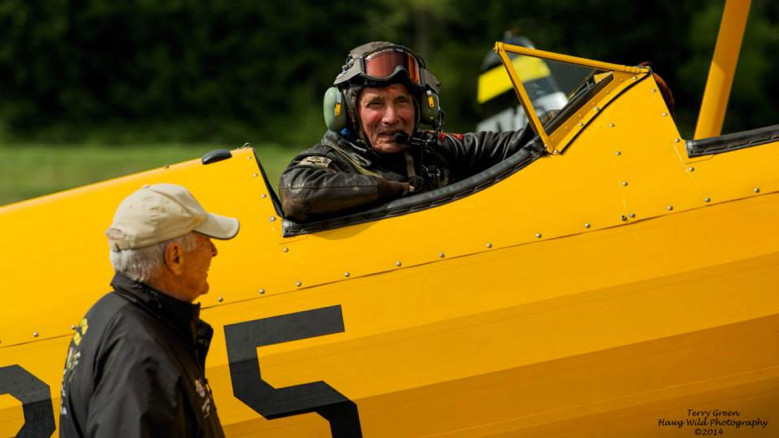
The curtain has fallen. John Hubner has given his final performance. Like James Salter, John was a gentleman, a husband, a father, a student, a scholar… and a fighter pilot. He died on January 4, 2016 at his home in Bellingham, Washington, with his wife, Julie, at his side. He was the most accomplished and complete aviator I have ever known.
Captain John Hubner, USMC, had just completed a 3-year tour at NAS Patuxent River, the Navy’s test pilot facility, when I met him. I was a newly minted Marine fighter pilot assigned to VMF-323 (Marine Fighter Squadron 323) at MCAS El Toro, in Southern California. John was assigned to the squadron as the LSO (Landing Signal Officer) and responsible for getting the squadron carrier qualified. VMF-323 was reforming and preparing for a Westpac cruise aboard the carrier USS Lexington the following spring.
I was 23. John was 5 years older. It seemed an enormous difference at the time. It wasn’t. What was enormous was the difference in skill, judgment and maturity. John had it. The young lieutenants, me included, did not.
At that time the squadron was flying Chance Vought’s F8 Crusader, the hottest aircraft in the fleet, an air superiority combat fighter designed to fly over 1000mph. Three years earlier Major John Glenn had set a cross-country speed record in it, crossing the country from Long Beach, California to Floyd Bennett Field, Brooklyn New York, in 3 hours 23 minutes, an average speed of 725.55 mph. The F8 was later made the subject of a History Channel documentary called “The Last of the Gunfighters.”
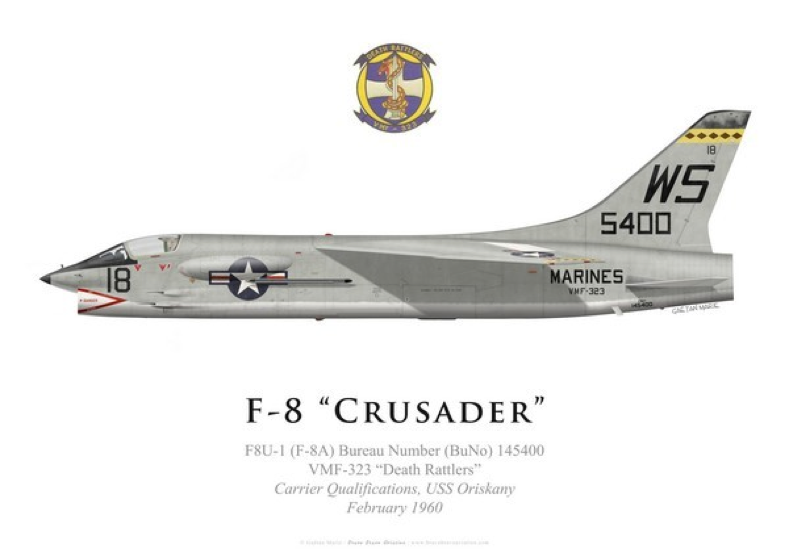
The Crusader was a joy to fly but unforgiving. It was especially difficult to take aboard ship and the cadre of young pilots John needed to train were full of testosterone and needed a steady hand to guide them. He had a mandate to instill good judgment in us to go along with our embrace of this new adventure. A good fighter pilot has to be fearless but never to the point of recklessness. Earlier that year we had lost a young lieutenant showing off to some ground troops at Camp Pendleton trying to execute a low level aileron roll but flying into the ground. The Marine Corps could not have found a better man for the new job than John Hubner.
“A superior pilot uses his superior judgment to avoid situations which require the use of his superior skills.”
Frank Borman – Air Force fighter pilot and Apollo 8 astronaut
John did his job with professionalism and good humor, signature traits that stayed with him until the end. He would stand on the end of Runway 25L at El Toro while we ground around the landing pattern at 500’ making simulated carrier landings. “Add power. You’re a little low. Bring it up. Keep the meatball centered,” John would say when we needed coaching. “Nice work,” he would tell us when our skills improved and we refined our technique to make small adjustments to power and angle of attack. It was hot, dusty work standing there. John would much rather have been in the pattern with us, but his job was to get us ready.
We were 25 pilots strong when the process began and the squadron could only take 16 on the deployment. It was a judgment call and the task was mostly left to John. Many of us were first tour pilots who had just earned our wings. Nine of us had to be cut. I was one of them and though it was disappointing I knew I was among the least experienced. John was diplomatic, telling us that we were all capable but he had to pare the roster and select the pilots with the most experience. It wasn’t easy to be left out. It wasn’t that we weren’t qualified. It was all about time in the aircraft. It was up to John to select the most seasoned pilots. It’s never easy to be cut. Fighter pilots have big egos, but John was able to do it in a way that made us better pilots going forward.
During this same period America was moving swiftly to catch up to the Russians in the “space race.” The Russians had put a man in orbit in April of 1961 and I remember crowding into the 323 Ready Room less than a month later to watch Alan Shepard make America’s first space flight on the first Mercury launch. I have no doubt that John Hubner could have been an astronaut. He was as smart and understood the complexity and details of the underlying science as well as any of the astronaut candidates, but he was a group leader and astronauts were more singular. He loved flying and would have been a standout astronaut. He was a cool head… as cool as any aviator I’ve ever known… but the men he led would have missed out on something special if he had become an astronaut.
After 323 pared down I moved to another F8 squadron at El Toro and 323 left for the Far East. I didn’t see John again for 50 years. That’s right. 50 years. But, John was one of those people you don’t lose track of and I followed his career with fascination from a distance. After a successful Westpac tour during which the squadron returned intact (it was the only squadron on the Lexington that didn’t lose a pilot), Vietnam was beginning to be a factor and by the time the war really heated up in the mid-sixties John was a major and took command of VMF(AW)513, an F4 Phantom squadron, based at DaNang. As the CO of 513 he flew 275 sorties, mostly dangerous low level missions in support of Marines on the ground, manifesting the characteristics of a true leader.
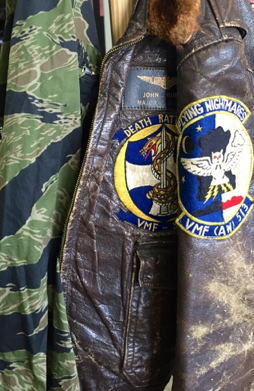
In 1973 John retired from the Marine Corps – sort of. As an accomplished test pilot and expert on the needs and mission of Marine aviation, John took a position with the Department of Defense and was sent to England to act as a liaison with Rolls Royce and the AV-8B Harrier vertical/STOL manufacturer as that aircraft was being introduced into the Marine Corps air arsenal.
It was in England that John met his wife, Julie, an accomplished aviatrix herself, and the rest is history. When John retired again, he and Julie moved to Bellingham, Washington, and began the next phase of their life together. They discovered a small regional airport in the Skagit Valley and threw themselves into their new life with the same passion and enthusiasm that their earlier lives exemplified. They bought a hanger, restored classic aircraft, involved themselves in the community and flew their own planes – his restored Stearman bi-plane in Navy colors and her Piper Cub.
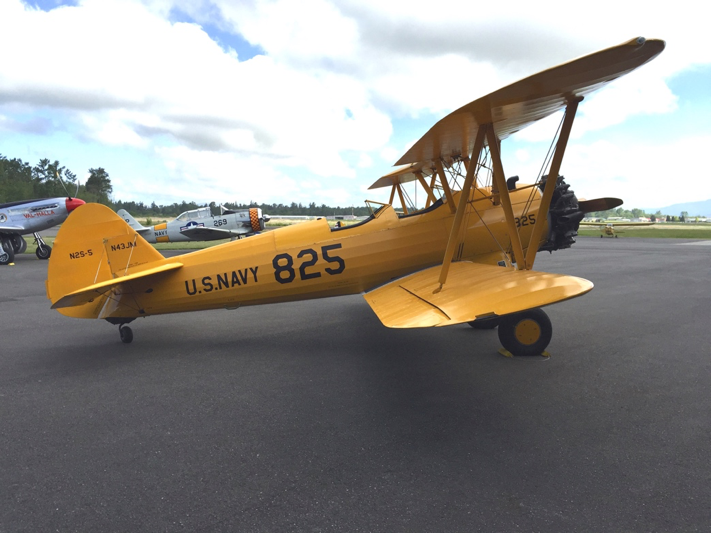
In 2014, at the urging of Carl Vogt, another 323 squadron mate, I attended a VMF-323 reunion in Pensacola. John and Julie were regular attendees at earlier reunions and suitably recognized for their celebrity. My wife, Marilynn, and I truly enjoyed the reunion and our time with John and Julie. We planned to get together when we returned home since we were relative neighbors in the State of Washington. We exchanged emails but both couples were busy and it didn’t happen. We were devastated to hear that John had been diagnosed with lung cancer. He died not long after the diagnosis.
Last Saturday there was a memorial celebration for John at the Heritage Flight Museum on the grounds of the Skagit Regional Airport. It was a large gathering with a ceremonial band and a Marine honor guard to present a folded flag to Julie. I was surprised at the turnout. I shouldn’t have been. He was a role model, a hero, a community activist, an aviation enthusiast, a father, a husband, and a solid, decent human being. His son, Bill, read from letters they had exchanged when John was in England. John had copied all the letters from both sides of the correspondence and sent them to Bill to memorialize their exchanges. They were touchingly formal, and he always signed off as “Father.” Some of the handwritten letters were more than 15 pages in length and included everything from paternal advice to world affairs. Another speaker at the event, a childhood friend, told stories about John’s leadership at boarding school and how, rather than attending college as expected by his upper class family, he confounded them by enlisting in the Marines. TR Moore, another 323 squadron mate, flew up from Arizona for the event and told stories about the Lexington cruise and their lifelong friendship.
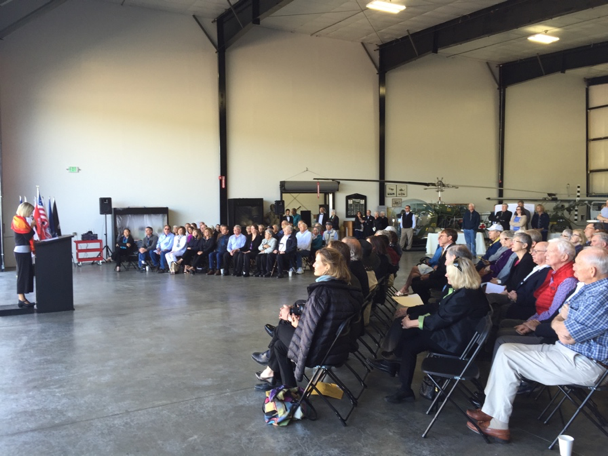
At the end of the ceremony the audience walked to the edge of the runway to watch John’s Stearman cut the ribbon on a new grass runway – one more of his projects – and then look up to see four of his friends fly overhead in the “missing man” formation, a ritual goodbye that honors a beloved airman. It was a suitable goodbye to a fully realized and complete aviator. Like James Salter who died last year, John has given his final performance, but those of us who knew him will always remember how exceptional he was and how he marked our lives.
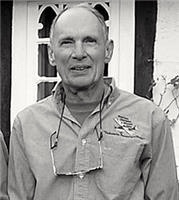
RIP John
































An interesting story and inspiring. I would like to think that your friend John and I actually crossed paths – because I spent a summer at Pax River before heading to flight training. Since there wasn’t much for us new ensigns to do, I hung around the flight line and scrounged rides in everything from Super Connies (used for AEW – very boring rides) to B-17s (fun) to tandem seat single engine jets that were used by otherwise desk-bound jockies who needed to get in their flight time . Maybe I flew with your friend. I’d like to think so.
Walt
What a beautiful tribute to an outstanding comrade.
Many thanks for the Missing Man article and photos. I had the pleasure of knowing John in Navy Flight Training in 1952-53. We got our wings together on 9/23/53, then joined VMF-122 at Cherry Point, NC, flying F9F-5 Panthers. Later the squadron was the first Marine outfit to get the FJ-2 Fury. In 1954, we hopped on the USS Coral Sea, for a six month deployment in and around the Med. John and I were roommates , and spent many happy times together, both on liberty, and in the air, doing “combat air patrol”.
John made a strong impression on me, even at that early age, and a few months ago I Googled him, and found him out there in Washington. I was in touch by email with Julie, and found the sad news of his illness.
John was a special guy. I will miss him, even though I haven’t seen him since 1954, 62 years!
Dick Ware
St. Petersburg, FL
Dick:
Thanks for the message. John had a big following. I didn’t know him as well as many, but I thought he was an extraordinary guy – and aviator. I’m glad you’re in touch with Julie. She’s pretty remarkable too.
Semper Fi,
Jack